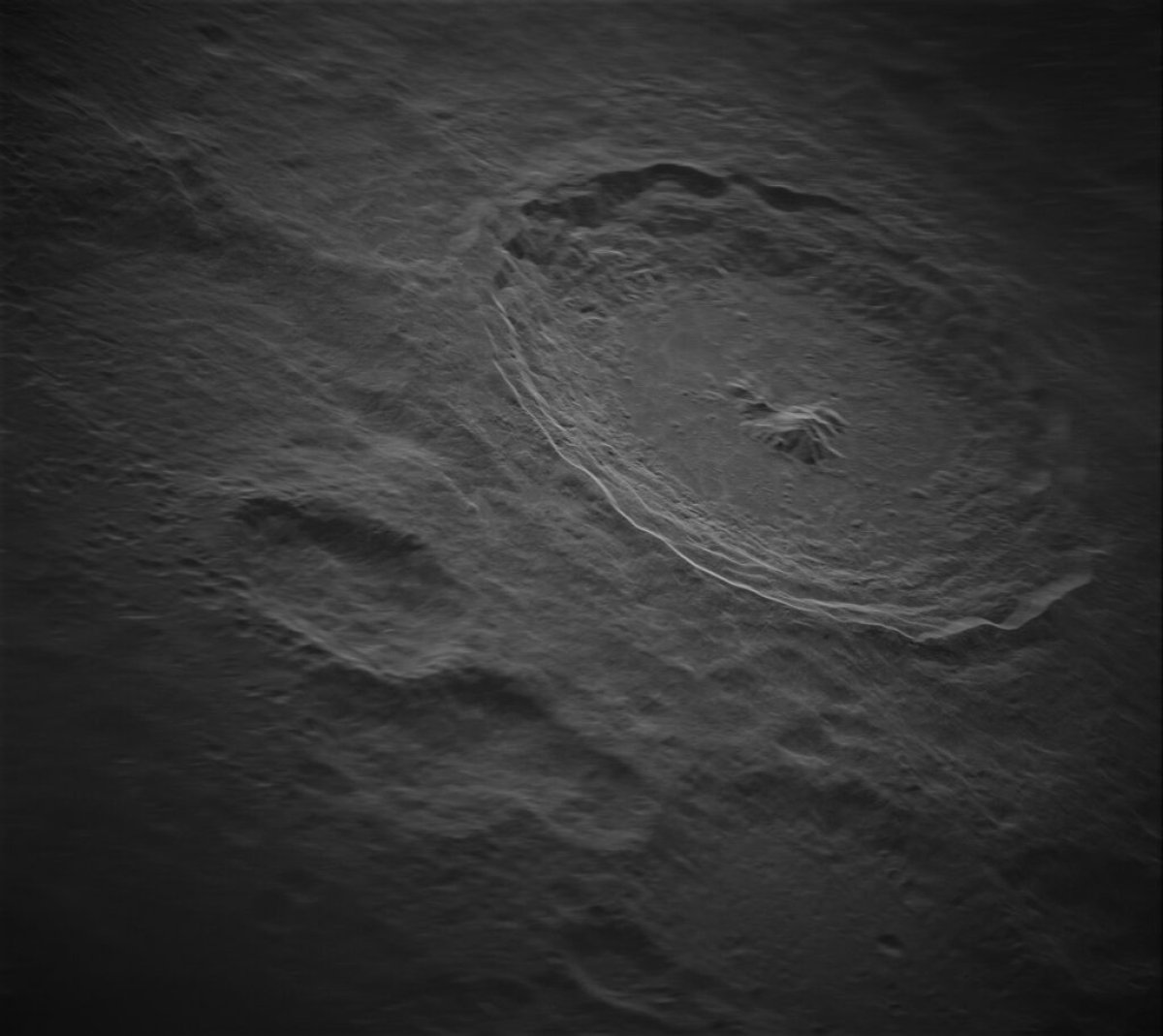Astronomers have captured a high-resolution image of one of the moon's youngest craters, using new radar technology.
The image of the 53-mile-wide Tycho crater was taken using the Green Bank Telescope at the Green Bank Observatory in West Virginia. It is the highest-resolution picture of the crater ever captured from Earth's surface.
The image contains around 1.4 billion pixels, according to the observatory, and covers an area of approximately 124 by 109 miles. It shows the entirety of the crater, which is estimated to have been formed 108 million years ago.
The Green Bank Telescope, which is the world's largest steerable radio telescope, was fitted with equipment that allows it to transmit a radar signal into space in 2020. The system, designed by Raytheon Intelligence & Space and the Green Bank Observatory, sends out a radio signal that is bounced back to Earth.
After being reflected back to our planet, the radar signal is picked up by antennas of the Very Long Baseline Array operated by the National Radio Astronomy Observatory and located across the United States. This signal is then translated into visible images.
"As each pulse is transmitted by the GBT, it's reflected off the target, the surface of the moon in this case, and it's received and stored. The stored pulses are compared to each other and analyzed to produce an image," said engineer Galen Watts, in a press release from the observatory. "The transmitter, the target and the receivers are all constantly moving as we move through space."
The movement causes tiny differences between the radar pulses. These differences can be examined and used to generate an image more detailed than that which can be produced in stationary observatories.
"While you might think this could make producing an image more difficult, it actually yields more important data," Watts added. "Radar data like this has never been recorded before at this distance or resolution. It all takes a lot of computing hours.
"Ten or so years ago it would have taken months of computing to get one of the images from one receiver, and maybe a year or more from more than one."
The Tycho crater is named after the 16th-century Danish astronomer Tycho Brahe, who made some of the most accurate measurements of the positions of the stars before the development of the telescope. The astronomer is also remembered for his prosthetic brass nose, which he wore after his nose was sliced off during a duel in 1566.
The crater is one of thousands of similarly sized craters on the moon and is believed to have been created when an asteroid or other space debris slammed into the lunar surface. What is remarkable about Tycho is its relative youth, with similar lunar craters as old as 3.9 billion years.
The crater is so fresh that astronomers can still see material ejected during the impact 108 million years ago, as bright streaks fading as they are exposed to the environment of space.
The image of the crater is the latest in a series of tests of the Green Bank Telescope's radar upgrade, which began in November last year. The observatory and its partners have previously captured radar images of the Apollo 15 landing site.
The tests will eventually lead to a high-power radar system capable of imaging objects far beyond the moon in unprecedented detail.
The technology should allow astronomers to use radar signals as far away as the orbits of Uranus and Neptune to produce high-resolution images, increasing our understanding of the solar system.
"The planned system will be a leap forward in radar science, allowing access to never before seen features of the solar system from right here on Earth," said Karen O'Neil, the observatory's site director, in a press release in January.

Uncommon Knowledge
Newsweek is committed to challenging conventional wisdom and finding connections in the search for common ground.
Newsweek is committed to challenging conventional wisdom and finding connections in the search for common ground.
About the writer
To read how Newsweek uses AI as a newsroom tool, Click here.








